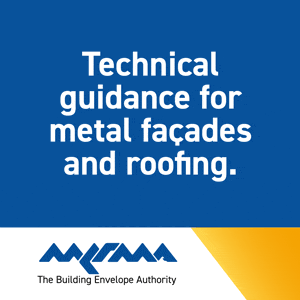Why considering fire safety has never been more important
- Specify & Build
- Aug 5
- 3 min read
John Duffin at Keyfix underlines the importance of designing and constructing high-risk buildings with fire safety in mind, and especially, the use of fire-rated and trusted products.

In an era of urban expansion and population growth, building designers and architects are under increasing pressure to create modern, sustainable, and efficient buildings. Amid this push for greener materials and cutting-edge technology lies an absolutely imperative and non-negotiable priority – fire safety. In fact, more people are becoming aware of the substantial impact certain materials can have on the spread of smoke and fire throughout high-risk buildings (HRBs).
While the Home Office’s online Incident Recording System (IRS) revealed there were 707 fires in HRBs in England in the year ending September 2023 – a 17% decrease compared to a decade ago, it illustrates the risk fires still present and why the specification and installation of fire-rated materials is so crucial. With protecting lives and property, ensuring the continued functionality of the building, and minimising damage critical, designing and constructing buildings with fire safety in mind isn’t just a regulatory box ticking exercise; it’s a fundamental responsibility.
Prevention of fire and smoke spread
Fire and smoke can very quickly pass through cavity walls and gaps if fire safety has not been fully incorporated into the design of a high-rise building. By implementing compartmentalisation and fire breaks into the building design, architects and building designers can play a critical part in fire prevention and safety. In fact, creating fire-resistant walls and floors – also known as compartments – can help contain fires within specific areas, and strategically placing fire-resistant barriers in the building’s facades can prevent horizontal and vertical fire spread.

Ensuring structural integrity
Using the finest materials and incorporating fire safety into the design of a building means architects, building designers, and contractors are able to ensure structural integrity and reduce the chance of the building collapsing. Indeed, specifying and installing passive fire protection systems, such as fire-rated walls and cavity trays, can not only help to prevent the spread of fire but also minimise damage to the building and its contents, reduce the need for costly repairs, and ensure the structural elements remain intact.
Regulatory compliance
With fire safety in HRBs under increasing scrutiny, more stringent regulations have been introduced. Indeed, the recent Approved Document Part B amendments focused heavily on a ban on combustible materials in and on the external walls of buildings, updated provisions on residential buildings with storeys over 11m, and the removal of national classes for reaction to fire and roofs.
The Building Safety Act increased responsibilities on dutyholders involved in the design and construction of HRBs and established a system of gateways to control the planning, design and construction of these buildings. The BSA also introduced the Golden Thread to emphasise the importance of providing all members of a project with up-to-date and accurate information at all times. So, while enhancing occupant safety through the implementation of fire safe practices and materials is absolutely crucial, doing so will also ensure that contractors, architects, building designers, and building owners comply with all relevant regulations.
The importance of fire-resistant materials
Identifying materials that prevent the spread of smoke and flames through comprehensive fire-resistance is a crucial part of building design. Additionally, using products proven not to create a thermal bridge also reduces the chance of heat easily transferring to surrounding areas and the resultant energy expenditure.
Keyfix’s non-combustible cavity trays (NCCTs) are manufactured from austenitic Grade 304 stainless steel, ensuring the highest standard of fire resistance for any building. As well as offering damp-proofing performance, Keyfix’s NCCTs boast incredible longevity and ongoing resilience, while ensuring no thermal bridging and removing the need for on-site fabrication. With fire safety in HRBs heavily in the spotlight, building design and the specification of trusted and fire-resistant materials has never been more important.
.png)























































.png)

